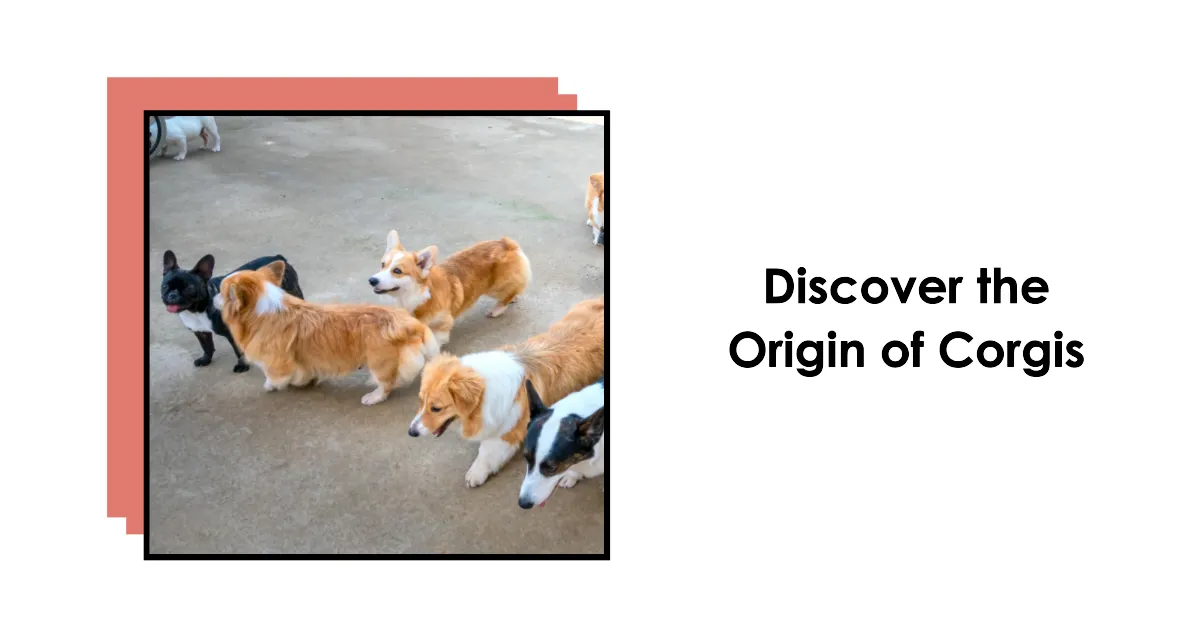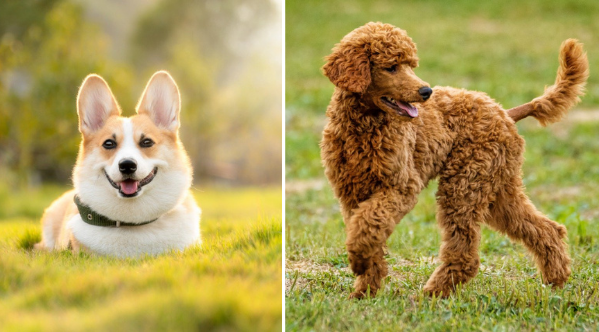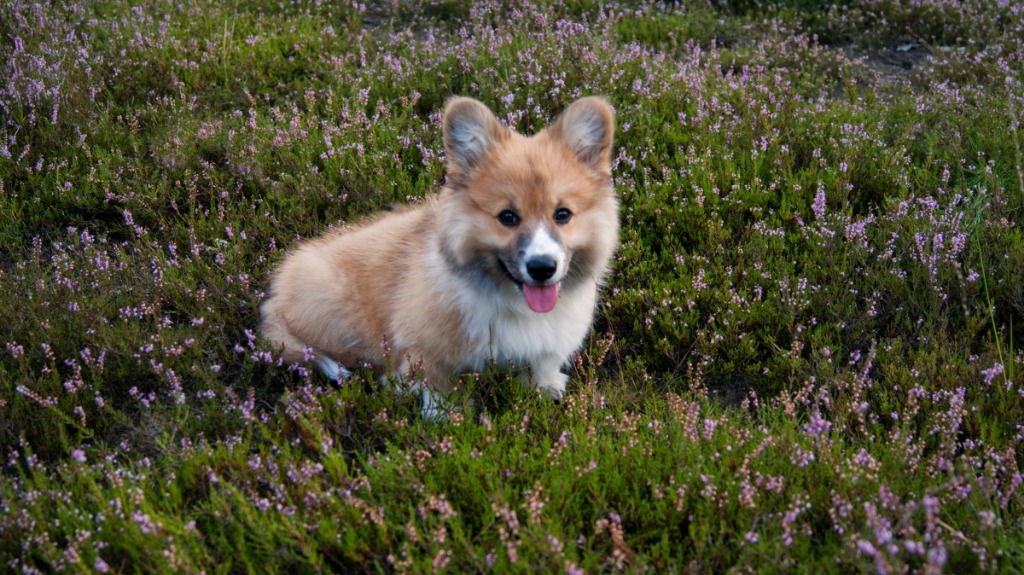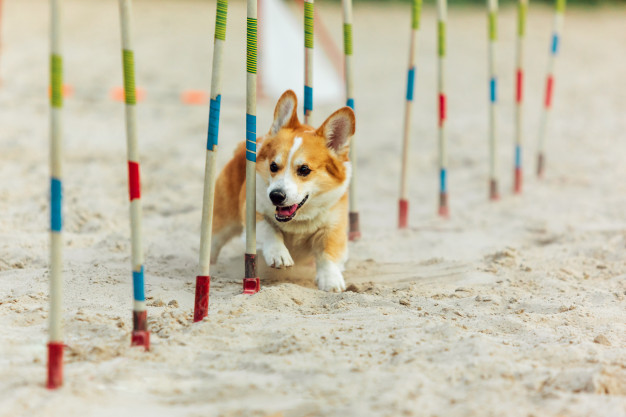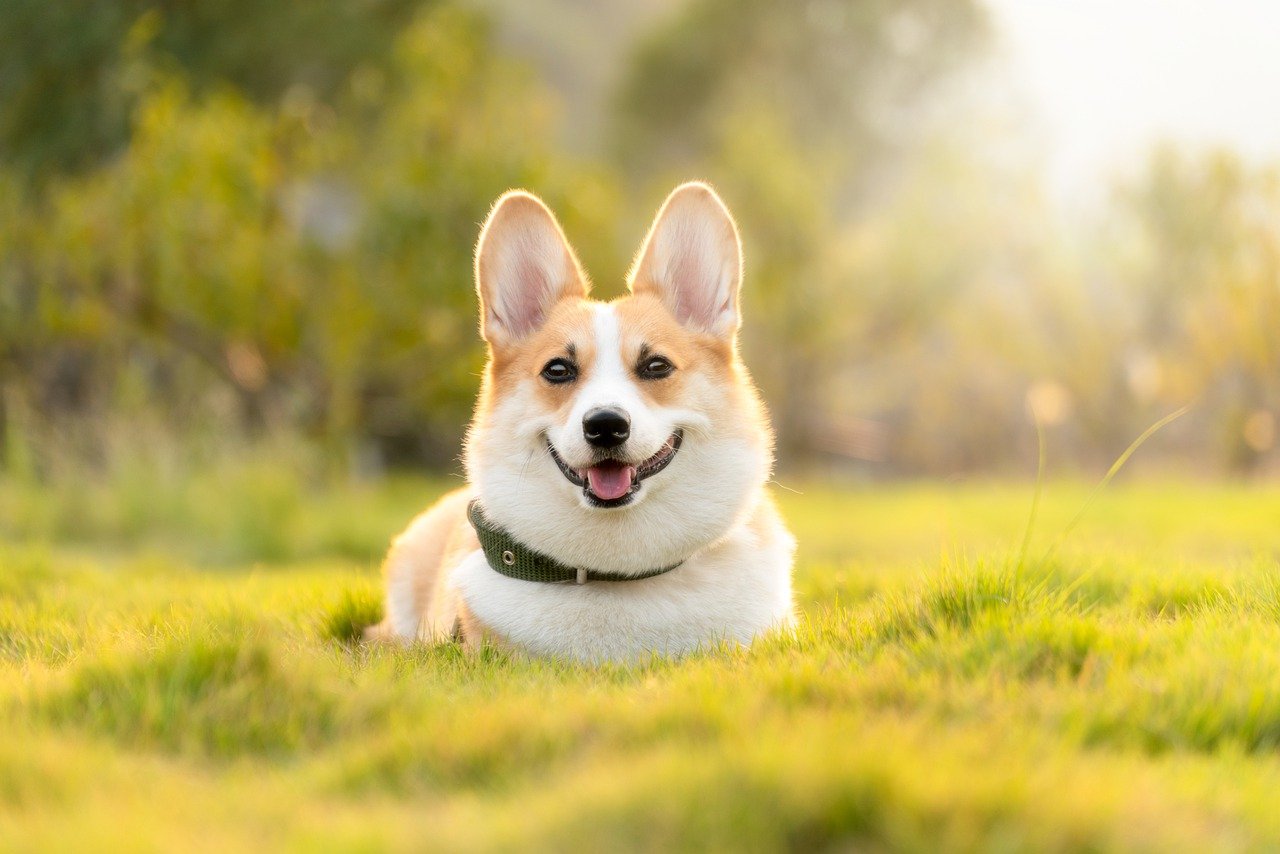Unlocking the Corgi Code: Understanding Your Corgis Mind

Have you ever wondered what goes on inside your corgi's mind? Well, guess what? You're about to find out!
In 'Unlocking the Corgi Code: Understanding Your Corgi's Mind,' we will embark on a fascinating journey to decode the secrets of your furry companion.
This insightful guide will provide you with all the tools you need to navigate the complexities of your corgi's behavior and ensure their safety.
From understanding their herding instincts to deciphering their body language, you'll gain a deeper understanding of your corgi's unique personality traits.
With practical training techniques and mental stimulation exercises, you'll cultivate a strong bond with your corgi.
Get ready to unlock the corgi code and embark on a remarkable adventure with your four-legged friend!
The Origins of Corgis
To understand your Corgi's mind, it's essential to delve into the fascinating origins of this breed. Corgis, known for their short stature and long bodies, have a rich history rooted in herding.
Originally from Wales, these lovable dogs were bred to work with farmers, herding cattle and sheep. Their breed characteristics make them excellent at this job - they're agile, intelligent, and have a strong herding instinct.
Corgis are also known for their loyalty and affection towards their families, which makes them great family pets. Their friendly nature and adaptability make them suitable for households with children and other pets.
However, it's important to remember that Corgis still retain their herding instincts and may try to herd family members or other animals, so proper training and socialization are crucial for their safety and the safety of others.
Herding Instincts and Behavior
Understanding your Corgi's herding instincts and behavior is crucial for building a strong bond and ensuring their well-being. Corgis have a natural inclination to herd, stemming from their origins as working dogs. Here are some important insights into their herding behavior:
- Instinctual Drive: Corgis have a strong instinct to gather, control, and move livestock, which can manifest in various ways in a domestic setting.
- Nipping Tendency: Due to their herding background, Corgis may exhibit nipping behaviors, especially towards children or other animals, as a way to control movement.
- Chasing Behavior: Corgis might display a strong desire to chase moving objects or individuals, as their herding instincts drive them to control and maintain order.
- Vocalization: Corgis often use their voice to communicate and guide, which may result in frequent barking or vocal alerts when they sense a need to herd.
Understanding and managing your Corgi's herding instincts will contribute to a secure and harmonious environment for both you and your furry companion.
Understanding Corgi Body Language
As a Corgi owner, it's important to understand your furry friend's body language, as it can provide valuable insights into their thoughts and emotions.
One key aspect to pay attention to is their tail wagging. While a high and fast wag typically signifies excitement and happiness, a low and slow wag may indicate caution or anxiety.
Additionally, the position of their ears can also communicate their mood. Ears pointed forward show attentiveness, while ears flattened against their head may indicate fear or submission.
Tail Wagging Meaning
You frequently see your Corgi's tail wagging, but do you understand what it really means? Tail wagging is one of the most recognizable dog emotions and communication signals. It's important to decipher the meaning behind your Corgi's tail wagging to ensure their safety and well-being.
Here are some insights to help you understand your Corgi's tail wagging:
- Slow and low: A slow and low tail wag may indicate insecurity or fear. It's important to approach your Corgi with caution and provide reassurance.
- Fast and high: A fast and high tail wag usually signifies excitement and happiness. Your Corgi is likely feeling playful and ready for some fun.
- Stiff and rigid: A stiff and rigid tail wag could be a sign of aggression or dominance. It's crucial to take immediate action and diffuse any potential conflicts.
- Tail tucked between legs: When your Corgi tucks their tail between their legs, it typically indicates fear or submission. Creating a safe and calming environment is essential in these situations.
Understanding your Corgi's tail wagging can help you respond appropriately and strengthen your bond with your furry friend. Keep observing their body language to ensure their emotional well-being.
Ears Position Communication
When your Corgi's ears are positioned forward, it indicates attentiveness and interest in their surroundings. Ears are a vital part of a Corgi's body language, and understanding their position can help you better understand their emotions.
If your Corgi's ears are perked up and facing forward, it means they're alert and focused on something. They might be curious about a new sound or trying to figure out what's happening around them.
On the other hand, if their ears are pinned back against their head, it could indicate fear or anxiety. Paying attention to your Corgi's ears position communication can help you ensure their safety and well-being. Remember, open and forward ears signal attentiveness, while pinned back ears might indicate discomfort or unease.
Training and Mental Stimulation for Corgis
Training and mental stimulation are essential for keeping your Corgi's mind engaged and active. Corgis are intelligent dogs that thrive on mental challenges, so it's important to provide them with opportunities to learn and problem solve.
Here are some ways you can train and mentally stimulate your Corgi:
- Obedience training: Teaching your Corgi basic commands like sit, stay, and come not only helps with their behavior but also provides mental exercise. It builds a bond between you and your furry friend while ensuring their safety.
- Problem-solving games: Corgis love to use their brains! Engage them with interactive toys or puzzle games that require them to figure out how to get treats or rewards. This stimulates their problem-solving abilities and keeps them entertained.
- Hide and seek: Hide treats or toys around the house and let your Corgi use their nose to find them. This game taps into their natural instincts and provides both physical and mental exercise.
- Agility training: Set up an agility course in your backyard or find a local training center. Corgis excel in agility, and it keeps them physically fit while challenging their minds.
Common Corgi Personality Traits
Corgis exhibit various personality traits that make them unique and endearing companions. Understanding their temperament is essential for a safe and harmonious relationship.
Corgis are known for their intelligence, loyalty, and affectionate nature. They're highly trainable and eager to please, making them excellent family pets. However, they can be prone to stubbornness and may try to assert their dominance if not properly trained and socialized.
Separation anxiety is a common behavior issue among Corgis, as they form strong attachments to their owners. To prevent destructive behavior, it's crucial to provide them with mental and physical stimulation.
Additionally, Corgis have a strong herding instinct, which can manifest in nipping or herding behavior towards children or other animals. Early socialization and consistent training can help curb these tendencies and ensure a happy and well-behaved Corgi companion.
Decoding Corgi Communication
Are you curious about what your corgi is trying to tell you? Understanding your corgi's communication is key to building a strong bond with them.
From tail wagging meanings to vocalizations and body language, there are various ways your corgi expresses themselves.
Let's dive into decoding these cues and unravel the secrets behind your corgi's unique language.
Tail Wagging Meanings
When interpreting your Corgi's communication, pay attention to the different meanings conveyed through their tail wagging. Corgis, like many other dogs, use their tails to express their emotions and intentions. Understanding what your Corgi is trying to communicate can help you establish a stronger bond and ensure their safety.
Here are some key meanings behind a Corgi's tail wagging:
- A relaxed and gentle wag: This indicates that your Corgi is feeling calm and content.
- A vigorous and wide wag: This suggests excitement and happiness. Your Corgi is likely feeling playful and ready for some fun.
- A low and slow wag: This may indicate that your Corgi is feeling cautious or unsure. Approach with caution and provide reassurance.
- A stiff, high wag: This can be a sign of alertness or potential aggression. It's important to assess the situation and take appropriate action to ensure safety.
Vocalizations and Body Language
Understanding your Corgi's vocalizations and body language is essential for decoding their communication. Corgis use a variety of vocalizations to express themselves, from barking and growling to whining and howling. Each vocalization carries a different meaning, so it's important to pay attention to the context and accompanying body language.
For example, a high-pitched bark accompanied by a wagging tail may indicate excitement or playfulness, while a deep growl with a stiff body posture could signal aggression or fear. Similarly, interpreting body language is crucial in understanding your Corgi's emotions. A relaxed and loose body posture generally indicates happiness and contentment, while a tense and stiff body suggests anxiety or discomfort.
Building a Strong Bond With Your Corgi
To develop a strong bond with your Corgi, prioritize consistent training and positive reinforcement. Building trust and establishing a positive relationship with your furry companion is crucial for a harmonious coexistence.
Here are some steps to help you build a strong bond with your Corgi:
- Spend quality time together: Engage in activities such as walking, playing, and training sessions to foster a sense of companionship and understanding.
- Use positive reinforcement: Reward good behavior with treats, praise, and affection. This encourages your Corgi to associate positive actions with positive outcomes.
- Be patient and consistent: Dogs thrive on routine and clear communication. Consistency in your training methods will help your Corgi understand what's expected of them.
- Respect their boundaries: Give your Corgi space when needed and avoid overwhelming them with constant attention.

